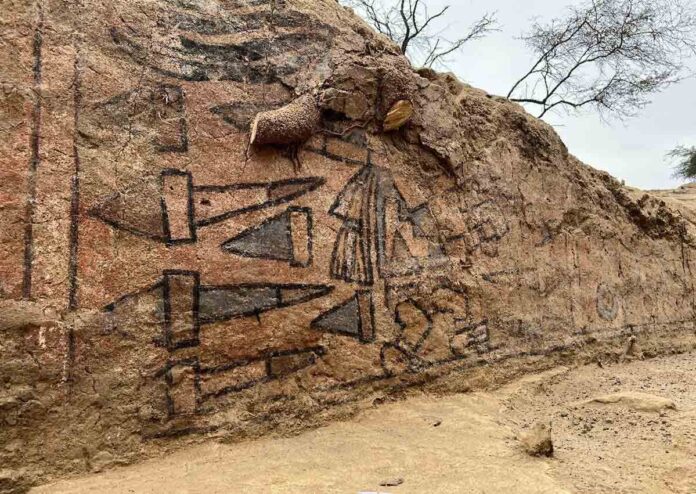This Peruvian Huaca Pintada was last seen over a century ago. A group of daring archaeology students and their professor have painstakingly rediscovered the lost 1,000-year-old mural. This they believe provides evidence for the development and evolution of an ancient Peruvian cultural phenomenon.
“It’s an exceptional discovery. First and foremost, because it’s rare in pre-Colombian archaeology to unearth wall paintings of such quality,” said Sam Ghavami, the Swiss archaeologist. Ghavami led the excavations that uncovered the mural in October.
“The composition of this painting is unique in the history of mural art in pre-Hispanic Peru,” said the archaeologist.
The fresco is part of the Huaca Pintada temple. It was a part of the Moche civilization, which flourished between the 1st and 8th centuries. This civilization worshipped the Moon, rain, iguanas, and spiders.
The uncovered mural is approximately 30 metres (98 feet) long. It has images in blue, brown, red, white, and mustard yellow paint. All of these have been extremely well preserved.
A procession of warriors can be seen in one section heading toward a birdlike deity in the images.
According to Ghavami, the painted images “appear to be inspired by the idea of a sacred hierarchy built around a cult of ancestors and their intimate links with the forces of nature.”
He told AFP that deciphering the mural’s message would be part of his research. But he believes it “could be interpreted as a metaphorical image of the region’s ancient inhabitants’ political and religious order.”
The find is also noteworthy because it combines styles and elements from two pre-Incan cultures. The cultures are the Moche and the Lambayeque. They lived on Peru’s north coast between 900 and 1350 AD.
The mural’s existence was only known through black and white photographs taken in 1916 by German ethnologist Hans Heinrich Bruning. Bruning was living in Peru at the time when he learned of the site after treasure hunters tried to loot it but found nothing of value.
Thick foliage took over the years. And no one had tried to look for the paintings until it piqued Ghavami’s interest. And Ghavami went in search of the long-lost fresco.
But first, he had to fight for permission from the family who owns the land where the mural was discovered.

